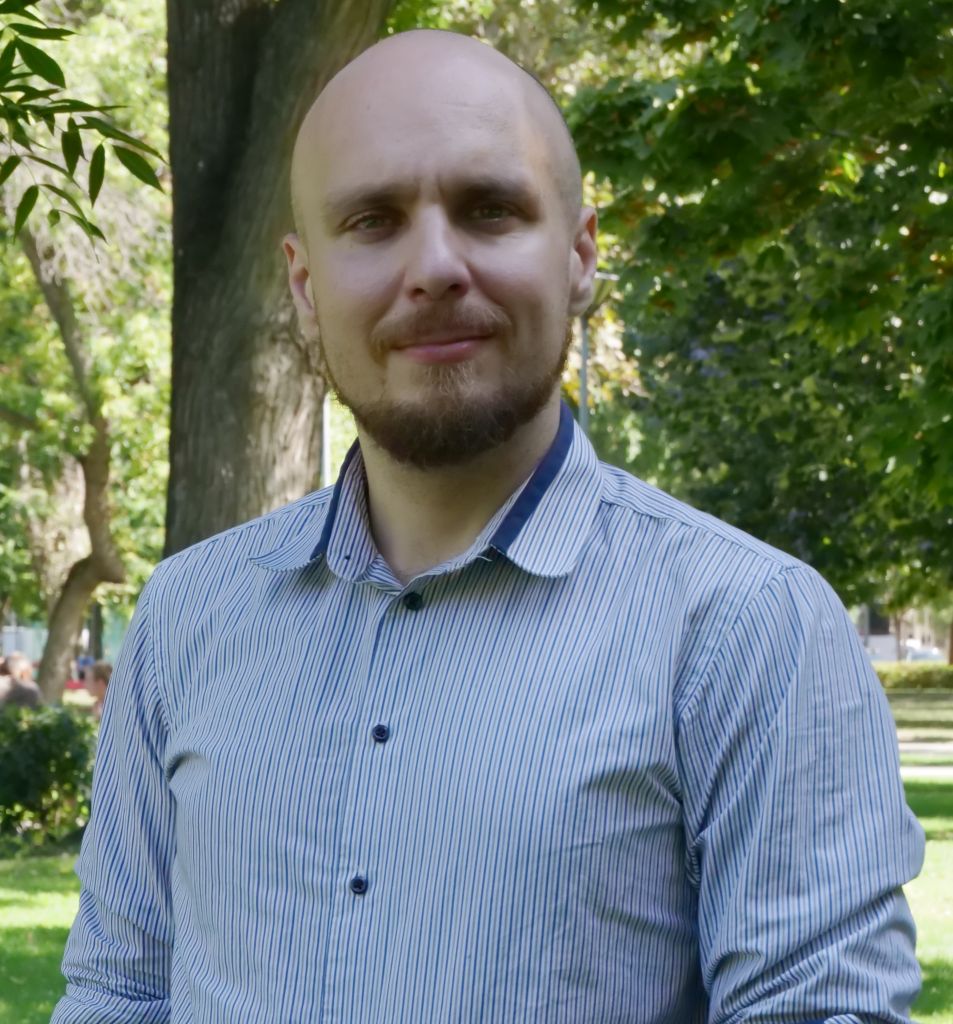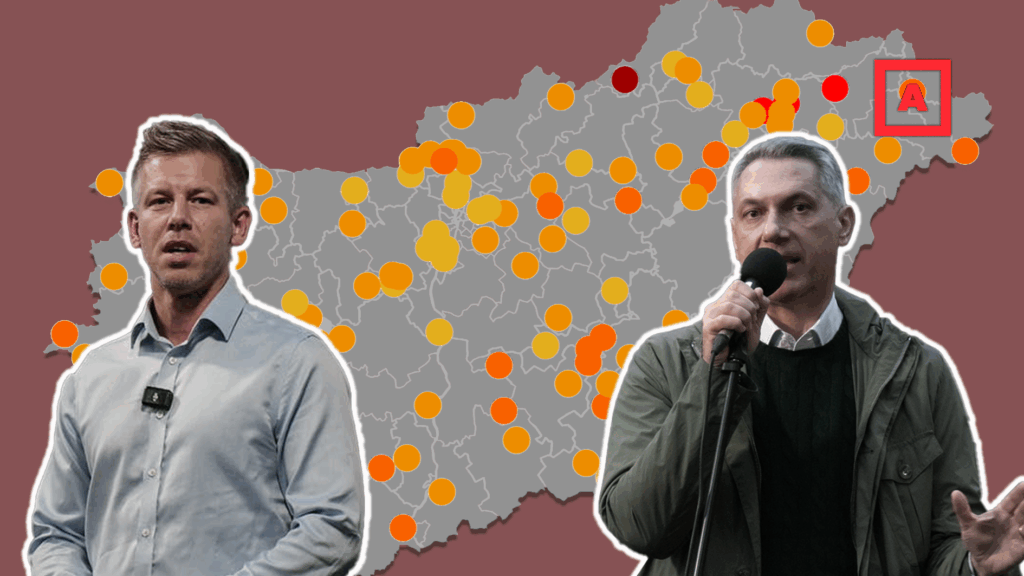The https://english.atlatszo.hu use cookies to track and profile customers such as action tags and pixel tracking on our website to assist our marketing. On our website we use technical, analytical, marketing and preference cookies. These are necessary for our site to work properly and to give us inforamation about how our site is used. See Cookies Policy
Opposition leader shakes up Orbán’s rural base while Orbán tries to regain cities
While opposition politician Péter Magyar has been crisscrossing the country in campaign visits, Orbán has so far been mostly absent from the campaign trail ahead of the 2026 elections. Instead of Orbán, his Minister of Transportation János Lázár picked up the pace somewhat with his “Lázárinfo” townhalls, which made stops in mid-sized towns, while Magyar was touring rural Hungary, the traditional heartland of Orbán’s support.
If recent information leaked from government circles is to be believed, PM Viktor Orbán is not satisfied with his party’s mobilization efforts for the upcoming election. Rallying Fidesz’s mostly rural supporters with door-knocking and locally held campaign events has been critical for the party’s past victories. For now, however, it does not appear that Fidesz is trying to compete in rural regions with Péter Magyar, the leader of the leading opposition party Tisza.

Magyar has been on an extended campaign tour from July to late October. According to Telex, during his “80 days in Hungary” nationwide tour between July and October, Magyar held public speeches or forums in 128 municipalities. At the same time, Orbán has only appeared in a handful of large rallies, held mostly in Budapest, in front of a select audience of supporters. Unusually, the Prime Minister remained stuck in the capital – something the opposition was criticized for in the past – while the opposition leader campaigned in the countryside.
Instead of Orbán, Minister of Construction and Transportation János Lázár attempted to challenge Magyar’s national tour. Parallel to the Tisza Party’s events, he held public forums called Lázárinfos. These became some of the only events where voters could openly speak with a leading Fidesz politician – and in many cases, they became forums where people aired their grievances and criticized the government.
Comparing the two tours, we see the difference in scale. According to his public social media pages, Lázár held public forums in a total of 21 municipalities until October 23, while Magyar made 128 appearances.
Additional interesting differences emerge when we look at where those events were held. More than half of the stops in Magyar’s tour were in municipalities with fewer than 5000 inhabitants.
In contrast, Lázár did not visit a single municipality with fewer than 5,000 residents –his tour was instead restricted to small and medium-sized cities.
We also examined how the people in the municipalities visited voted in the 2022 parliamentary election (which Fidesz won overwhelmingly) and 2024 (where Fidesz lost significant support, and was also the first election Tisza participated in). Apparently, both politicians tried to visit municipalities where they could gain extra votes, meaning they typically avoided places where their party is dominant.
Based on the 2024 vote results, we can see that Magyar visited somewhat more Fidesz-leaning municipalities than Lázár — though this is largely because he also went to much smaller municipalities, where Fidesz traditionally has a large advantage.
Lázár, with 3 exceptions, held forums only in municipalities where the Tisza Party in the 2024 EP elections achieved a higher share than its national result (29.6 %). Magyar’s destinations include both places where Fidesz underperformed and overperformed – for example, Balatonföldvár (36.19 % Tisza vote in 2024) and Arló (13.3 %).
However, among the smallest municipalities, Magyar mostly visited ones where the Tisza Party already got many in 2024, at least compared to similar-sized places. This suggests that the local network-building of Tisza in the world of very small villages has been difficult in the past year. Presumably, Magyar’s visits are organized by Tisza’s local chapters (“islands”), small groups of activists that were key to the party’s recent successes. However, it seems that with few exceptions, regions dotted with tiny (below 1000 inhabitants) villages remain difficult terrain for the opposition.
We also looked at how party support changed in the municipalities visited. As we previously reported, in an average Hungarian municipality, Fidesz’s support fell by 8 percentage points between 2022 and 2024. The drop was much larger than the national average in Central Hungary and around Debrecen and Győr.
It would be intuitive for Fidesz to try and regain this lost support with a national campaign tour, but the Lázárinfo series is hardly suitable for this: most stops took place in places where Fidesz lost less support than the national average.
From this viewpoint, Magyar’s nationwide tour was more balanced, although he avoided destinations where the ruling party’s support increased to 2022 (admittedly, few such places can be found).
On October 23, Orbán also announced a nationwide tour, which he called “anti-war”. Strikingly, Orbán is also skipping small municipalities: the known stops, aside from one exception (Mohács), are all county seats, mid-sized cities.
In one respect, however, the new tour may complement Lázárinfo:
unlike Lázár’s forums, Orbán is going mainly to places where Fidesz suffered exceptionally large losses in 2024.
Looking at the results in county seats, it appears that Orbán is planning to visit cities where Fidesz performed worse than the national average, such as Kecskemét, where the ruling party in 2024 performed 10.37 percentage points worse than in 2022.
Written and translated by Zalán Zubor, data visualization by Krisztián Szabó. The original Hungarian version can be found here. Cover image: montage by Átlátszó.


